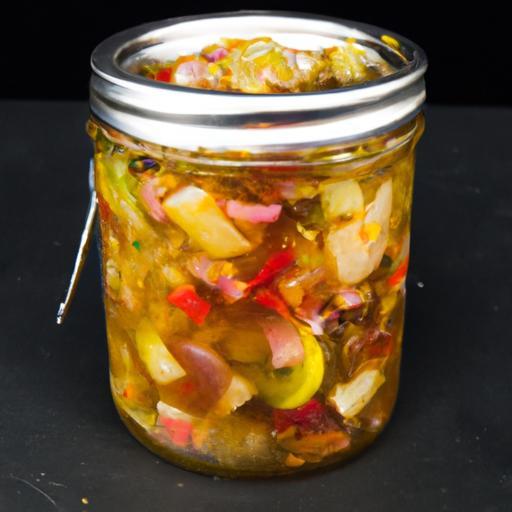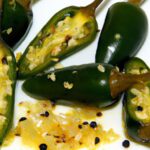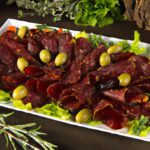In the bustling world of home preservation, where jars line pantry shelves like colorful trophies of harvest, one tool stands out as the unsung hero of long-lasting, safe storage: the pressure canner. More than just a kitchen gadget, a pressure canner unlocks a world of possibilities-transforming fresh garden bounty into vibrant, shelf-stable treasures that defy time. But what exactly is this mysterious vessel, and how does it work its magic? Join us as we delve into the fascinating science and art behind pressure canning, revealing how this kitchen powerhouse safeguards flavors, nutrients, and memories for months-and even years-to come.
Unlocking preservation through pressure canning is a culinary adventure that transforms fresh harvests into pantry treasures with lasting flavor and safety. Understanding the science behind this method demystifies how high temperature and steam pressure work together to eliminate harmful bacteria, ensuring your preserved foods remain safe and delicious for months or even years. Whether you’re bottling your garden’s summer bounty or stockpiling homemade sauces, mastering pressure canning is an empowering skill for any kitchen enthusiast.
Choosing the Right Pressure Canner for Your Home Kitchen
Selecting the perfect pressure canner is essential to unlocking preservation with confidence. Consider your stovetop type – gas, electric, or induction- and the canner’s capacity, typically ranging from 16 to 23 quarts. A dial gauge canner provides precise pressure reading while a weighted gauge offers simplicity and reliability. Opt for durable materials like heavy-gauge aluminum or stainless steel to ensure even heat distribution and long-lasting performance. Remember, the right canner fits comfortably on your burner and allows adequate space for steam circulation, which is key to consistent canning results.
Prep and Cook Time
- Preparation: 20 minutes (includes jar and canner prep)
- Processing Time: Varies by recipe and altitude (typically 20-90 minutes)
- Total Time: Approximately 1-2 hours
Yield
Depends on jar size and recipe; typically 7-9 pint jars per batch
Difficulty Level
Medium – Requires attention to detail and patience but very rewarding
Step by Step Guide to Using a Pressure Canner with Confidence
- Prepare your jars and lids: Wash thoroughly and keep warm to avoid thermal shock. Using hot water helps your jars hold temperature when processing.
- Prepare your recipe: Whether it’s vegetables, meats, or sauces, follow trusted canning recipes to guarantee safety.
- Fill jars appropriately: Leave precise headspace (usually 1 inch), wiping rims clean to ensure a proper seal.
- Load jars into canner: Use the rack to keep jars off the bottom and allow steam circulation.
- Add water: Typically 2 to 3 inches, depending on manufacturer instructions.
- Seal the lid and vent steam: Lock the lid securely and heat the canner until steam vents steadily (about 10 minutes) to flush air.
- Close the vent and build pressure: Apply the weighted gauge or close the dial gauge and increase heat to reach target pressure.
- Process for recommended time: Maintain steady pressure, adjusting heat as necessary. Use a timer to track processing time precisely.
- Depressurize safely: Turn off heat and let the canner cool naturally until the pressure indicator shows zero.
- Remove jars carefully: Use a jar lifter and place them on a towel to cool undisturbed for 12-24 hours.
- Check seals: After cooling, ensure lids are concave and do not pop when pressed.
Maintaining and Troubleshooting Your Pressure Canner for Long Lasting Use
Caring for your pressure canner extends its lifespan and keeps your preservation efforts safe. After each use, clean the lid gasket carefully, avoiding harsh cleansers that degrade rubber seals. Inspect the pressure gauge annually and calibrate if needed-some manufacturers offer testing services. Avoid using metal utensils that can scratch enamel surfaces; opt for silicone or wooden tools instead. If you notice difficulty maintaining pressure or leaks, check the gasket for cracks and replace as necessary. Storing your canner dry and disassembled prevents rust and warping, ensuring it’s ready whenever you want to embark on your next preservation journey.
Ingredients for Pressure Canning Preparedness
- Fresh produce or meats: Washed, peeled, and trimmed per recipe
- Canning jars: Wide-mouth or standard mouth, heat-resistant glass
- Lids and bands: New lids recommended for each canning session
- Filtered water: To add steam in canner
- Salt or lemon juice: Optional, as per recipe for flavor and acidity
- Pressure canner with gauge: Minimum 16-quart capacity recommended
- Jar lifter and funnel: For safe, mess-free filling and handling
Chef’s Notes: Tips for Success
- Altitude adjustment: Pressure and processing times vary-consult trusted altitude guides.
- Headspace matters: Too little can cause spoilage, too much leads to loss of liquid; follow recipe guidelines religiously.
- Practice patience: Resist the urge to rush pressure buildup or release, as this impacts seal quality.
- Test seals after 24 hours: Store failed seals in the fridge and consume promptly.
- Invest in quality: A sturdy pressure canner is safer and often more user-friendly over time.
Serving Suggestions
Once your jars of homemade goodness are ready, showcase them as thoughtful gifts or pantry staples. Use your pressure canned tomatoes to craft rich sauces paired with fresh basil and a drizzle of olive oil. Serve canned green beans with a sprinkle of toasted almonds and sea salt for a crunchy side. For a cozy winter meal, incorporate your pressure canned chicken broth into soups and stews, enhanced with fresh herbs and hearty noodles for comforting warmth.

| Nutrition per Serving (1 cup canned food) | Calories | Protein | Carbs | Fat |
|---|---|---|---|---|
| Vegetables (e.g. green beans) | 40 | 2g | 8g | 0g |
| Tomato Sauce | 60 | 2g | 14g | 0.2g |
| Chicken Broth | 20 | 3g | 1g | 1g |
For deeper technical insights on pressure canning safety, always refer to USDA’s National Center for Home Food Preservation, a trusted authority in food preservation standards.
Expand your preservation skills by exploring our article on water bath canning techniques for high-acid foods, complementing your pressure canning repertoire beautifully.
Q&A
Q&A: Unlocking Preservation – What Is a Pressure Canner?
Q1: What exactly is a pressure canner?
A pressure canner is a kitchen powerhouse designed to preserve low-acid foods safely. Unlike boiling water canners, it uses high-pressure steam to reach temperatures above 240°F (116°C), effectively killing harmful bacteria, spores, and enzymes. Think of it as a high-tech guardian that transforms fresh produce, meats, and meals into long-lasting treasures.
Q2: How does a pressure canner differ from a regular water bath canner?
While water bath canners rely on boiling water at 212°F (100°C), they’re only safe for acidic foods like fruits, jams, and pickles. Pressure canners crank the heat higher by trapping steam under pressure, making them essential for low-acid items such as vegetables, meats, and soups. This higher temperature ensures a thorough, safe seal, preventing foodborne illness.
Q3: Why is pressure important in the canning process?
Pressure raises the boiling point of water, enabling the canner to reach temperatures well beyond normal boiling. This intense heat destroys resilient bacteria like Clostridium botulinum, the hidden villain behind botulism. Without pressure, these spores could survive and spoil your preserved goods – or worse, cause illness.
Q4: Can I use a pressure canner for jams and fruit preserves?
Generally, no. Fruits and jams are high in acid, making them safe to process in a boiling water bath. Using a pressure canner for these can degrade the texture and flavor. Reserve your pressure canner for low-acid items where safety depends on those elevated temperatures.
Q5: What does it take to master pressure canning?
Patience, precision, and a trusty manual or guide. Every pressure canner has its quirks-weight gauges or dial gauges for pressure monitoring, the size of jars, and altitude adjustments. Mastery means understanding these nuances and following recommended times and pressures for each recipe. When in doubt, always consult reliable sources like the USDA or extension services.
Q6: Why should home preservers consider investing in a pressure canner?
If you’re passionate about seasonal bounty, wholesome meals, or survival preparedness, a pressure canner is your best ally. It unlocks the ability to safely store garden veggies, hearty soups, and proteins year-round, reducing waste and expanding your culinary horizons. Plus, it brings a comforting independence, knowing you’ve sealed nutrition and flavor in every jar.
Q7: How can a pressure canner contribute to sustainable living?
By preserving surplus produce, minimizing food waste, and curbing reliance on store-bought canned goods, pressure canning nurtures sustainability. It empowers you to eat locally, seasonally, and healthily-while saving energy and money. In essence, it’s a timeless technique with modern environmental benefits.
Q8: Any tips for first-timers using a pressure canner?
Absolutely! Start with trusted beginner recipes, follow instructions to the letter, and never shortcut the pressure or processing time. Always check your canner’s seals, vent steam properly before timing, and keep a log of your batches. With practice, that intimidating lid will become your kitchen’s best friend.
Closing Remarks
As we peel back the lid on the world of pressure canning, it’s clear that this powerful tool is more than just a kitchen gadget-it’s a gateway to preserving nature’s bounty with confidence and safety. Whether you’re a seasoned preservation pro or just dipping your toes into the art of canning, understanding what a pressure canner is and how it works unlocks a new realm of culinary possibility. So, next time you harvest those vibrant garden veggies or pick up a bushel of fresh produce, remember: with a pressure canner in hand, you’re not just saving food-you’re capturing seasons, memories, and the timeless pleasure of homemade goodness. Happy canning, and may your pantry overflow with preserved treasures!


